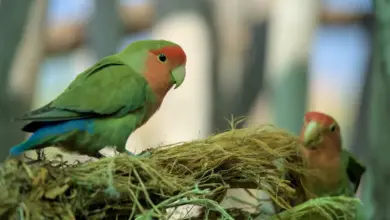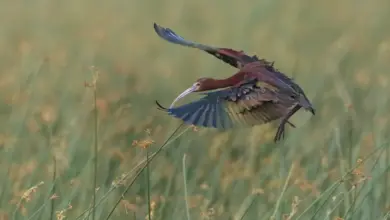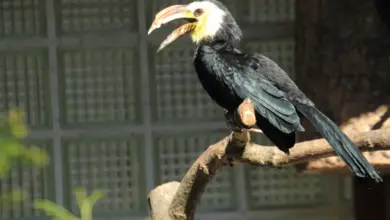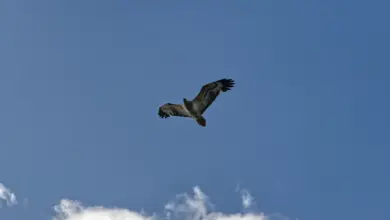How Do Birds Survive Winter?
How Do Birds Survive Winter? How Do They Keep Warm?
Once temperatures start to dip, most birds start their long journey south to warmer climates.
But not all birds migrate. And with winter temperatures that can easily reach below -30 degrees in many parts of North America, how is it they don’t freeze or die?
Why some birds have evolved to migrate to warmer temperatures while others are willing to stick it out in snow-encrusted woods and forests is still a mystery. This is especially true for smaller birds that have a more difficult time in winter than their larger counterparts.
This is because smaller birds have a faster metabolism and require more heat, up to 106 degrees Fahrenheit to keep warm which means more calories in order to keep that level of core body temperature.
And in the dead of winter, food is not always an abundant resource.
What Do Birds Eat in Winter?
During winter birds will pretty much eat whatever they can get their beaks into. This includes what they’d eat during the summer months if those food sources are still available like seeds from pine cones, nuts, fruit, insects and whatever else they can find.
Some birds gear up for winter storing “caches” of food in fall that they can feed on when things get tough. Blue Jays, Black-capped Chickadees, nuthatches, and Tufted Titmice are all known to hide food in small caches to eat at a later date.
But not all birds are lucky enough to have a storehouse of food and must search and forage every day in order to survive.
When temperatures drop, this becomes much more important for smaller birds. They can easily get too cold and die if they don’t have enough calories or stored fat reserves to sustain their internal core temperatures.

How Do Birds Keep Warm?
When it’s cold outside, especially at night, birds will fluff up their feathers to create an insulated exterior that makes them look like they’ve just gained twice their body weight. Of course they are not bigger or fatter, they’re just fluffier.
Small air pockets under the downy feathers hold insulated warm air close to their bodies keeping them warm and toasty. And their warm bodies pump warmed blood to the naked feet, keeping temperatures just above freezing so as to not form ice crystals and damage their fragile feet.

The same goes for gulls standing on ice. Their idea of cold feet and ours are obviously very different!
Depending on the species, birds have adapted in a few other ways to keep the cold out. For example, many smaller birds like sparrows will roost together at night using each other’s body heat to keep warm.
This not only helps all involved to survive the cold, it also helps them survive predator attacks from prey birds like owls.
Other types of birds like woodpeckers or sparrows will find holes in trees, abandoned buildings, bird houses or anything that can help them feel warmer, and safer.
Finches will eat more during the fall and store fat that keeps them warm and alive during food shortages while chickadees will sit shivering to produce body heat.
Since many types of waterfowl also stay for the winter, and that too, in water, they have adapted by growing a second layer of insulating downy feathers. This is similar to if we were to put on a down jacket.
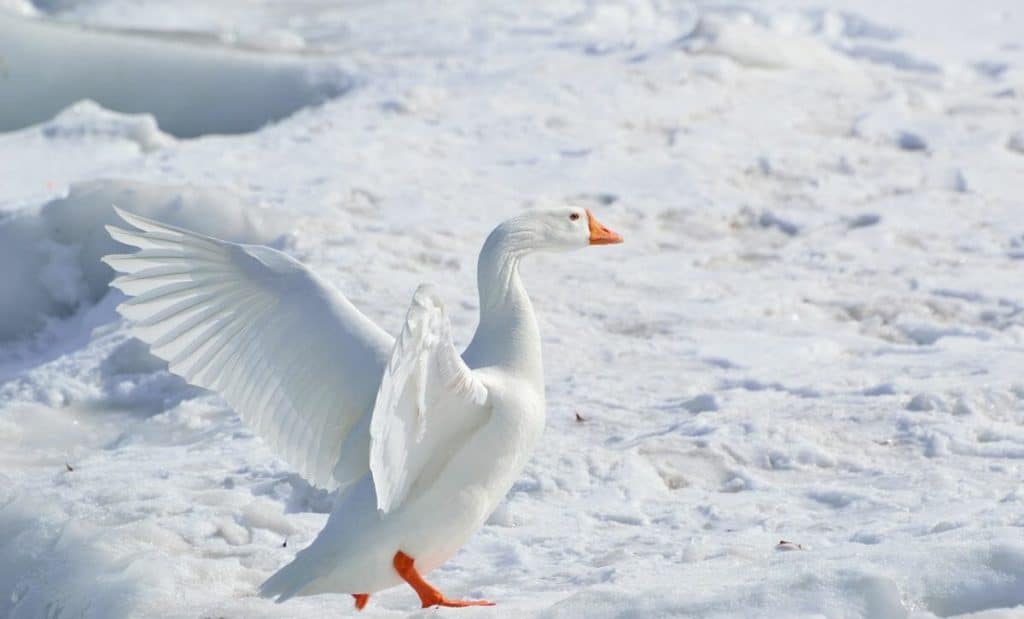
A few species even employ regulated hypothermia which brings down their body temperatures at night by as much as 20 °F to conserve energy.
Can Birds Freeze to Death?
Yes, birds can and do freeze to death each and every winter. Birds are not just susceptible to normal cold weather, but bad weather like sleet and hail can kill a bird quickly because once a bird is completely wet in such temperatures, it will most likely not be able to maintain a high enough core body temperature to survive.
Food is another major concern, particularly for smaller birds like finches or sparrows. It takes a lot of calories for these smaller birds to keep their high body temperature up. And if they can’t find enough food to convert calories in heat, they will die.
For some smaller birds living in extreme conditions this can take a little as 24 hours.
What Temperature Is Too Cold for Birds?
Antarctica on average is -60°C (-76°F) at the South Pole and −15 and −20 °C (-5 and −4 °F) along the coastlines, and there are birds living there that can adapt to some pretty extreme temperatures. So (some) birds can take some pretty cold temperatures.
At present, there are 59 known species of birds in Antarctica including penguins, Wandering Albatross, Cape Petrels and Cattle Egrets to name a few. And now new findings have confirmed there are 7 new vagrant bird species that are being regularly found there.
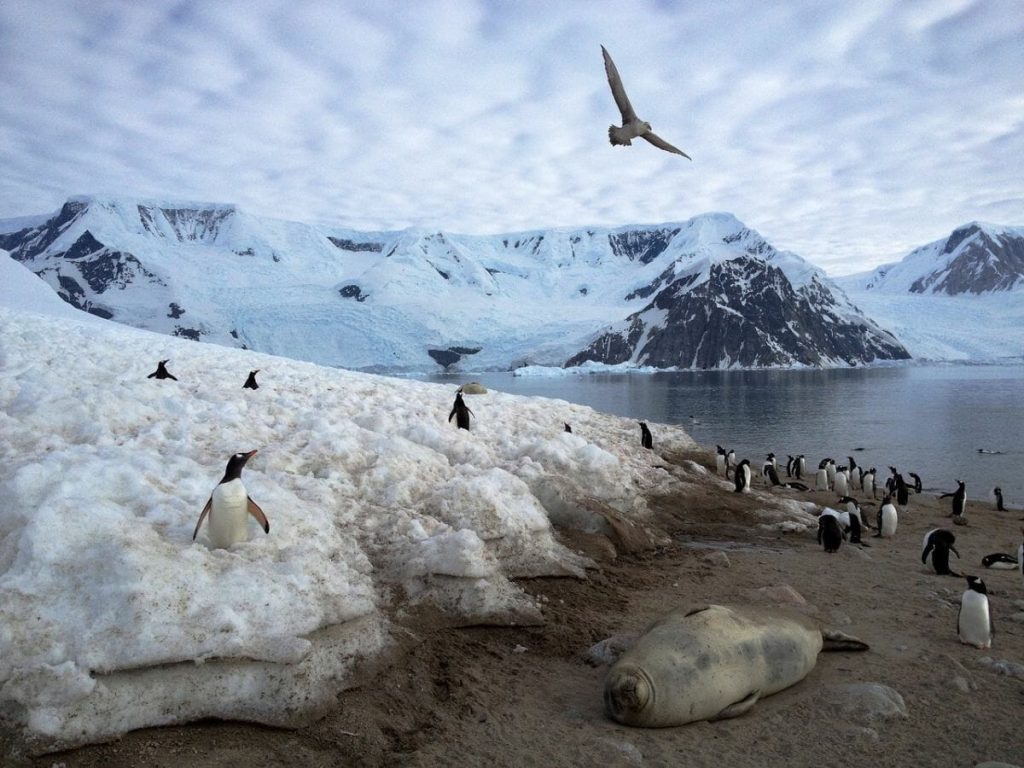
Arctic birds are more adapted to the cold weather than your average Blue Jay. And it really depends more on the individual species of bird as to what temperature they can actually withstand.
But overall, it is a safe approximation that many Northern bird species can survive in temperatures that dip below freezing.
And those that can’t will usually be migratory birds that will start flying south as soon as the temperature dips to 40 degrees Fahrenheit.
Why Do Some Birds Stay for the Winter?
Some birds have adapted to the winter cold and simply choose to stay. Evolutionary speaking, even flying south has risks and takes up huge amounts of energy.
In the long term, some birds have just adapted by accepting one set of risks for another. Rather than expend large amounts of energy flying south and face the risk of being picked off by predators along the way, they face the dangers of the cold and fewer sources of food.
It is still unclear why some species have evolved to fly south and others to stay and brave the cold.

Do Birds Hibernate in the Winter?
No, birds do not hibernate. Some do go into a hibernation-like state called a “torpor” (temporal heterothermy).
This is not the same as true hibernation like bears do. Bears can hibernate for months whereas birds can only enter a stupor for a few hours or days before they risk death.
So to make things simple, think of temporal heterothermy or a torpor as a short hibernation since almost everything else, scientifically speaking, is the same. It’s the length of time that differentiates them.
And there are only a few known species of birds that employ this method to survive the cold.
The most common is the hummingbird which when in torpor can drop and regulate its core body temperatures to as much as 10°C to 30°C below its normal 40.5°C core body temperature.
Just to give you an idea of how extreme this really is, when our body temperature drops by just 2°C, we would enter a state of hypothermia.
In this state, the bird’s heart rhythm also slows which is why so many people misinterpret that the hummingbird is sleeping or hibernating, or worse is dead.
Do All Birds Migrate?
No, all birds do not migrate. Quite a few species of birds stay right where they were living during the cold winter months like cardinals, Blue Jays and woodpeckers to name a few.
In fact, some birds never seem to go anywhere. It’s proven that partridges never move more than a little over half a mile from where they were born. Regardless of weather conditions.

Scientists still don’t clearly understand why birds have evolved so differently, but both systems of dealing with the oncoming winters seems to work, as both migrating and non-migrating birds are still going strong.
What science is clear on is that a hormone release in migratory birds is the catalyst to their departure. This hormone release is triggered naturally by seasonal changes like temperature and shorter amount of daylight hours.
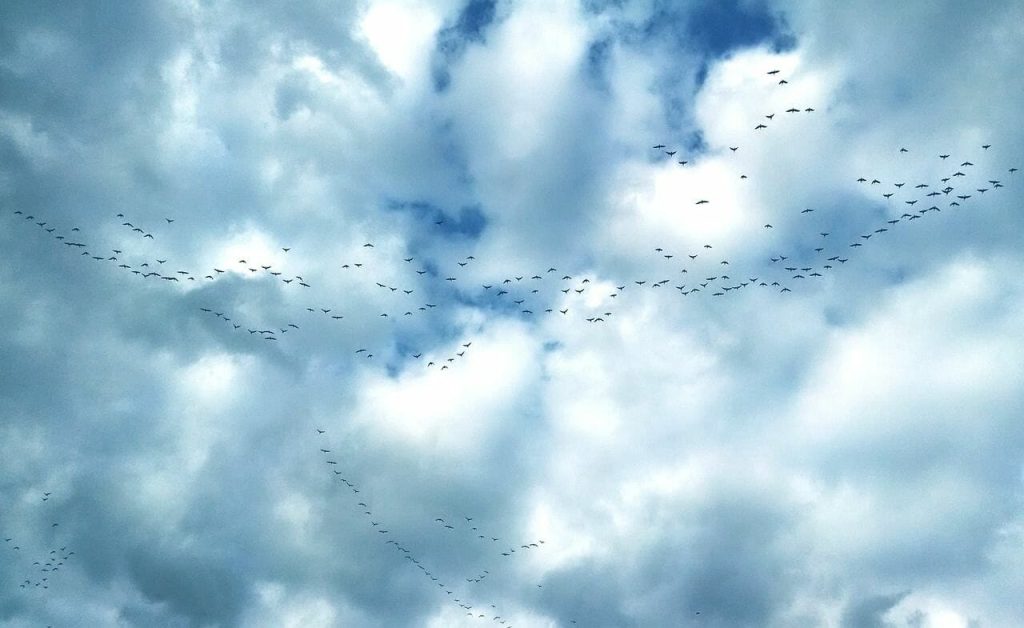
Non-migrating birds may also succumb to a hormonal boost, but they react in different ways and may start eating more to store body fat or caching food stocks to survive the winter months.
Interested in hibernation and torpor? Read: What Is The Difference Between Hibernation And Torpor
In Closing
Winter is a tough time for all birds. Migrating birds must contend with a loss of sleep, substantial calorie depletion and predators during their entire trips south.
Whereas the non-migratory bird species must survive harsh winters that can include life-threatening weather, food shortages, and the possibility of freezing to death.
I guess it’s the same old bird song, “Should I stay or Should I Go?” Either way, there are risks and rewards for whichever a bird chooses.

